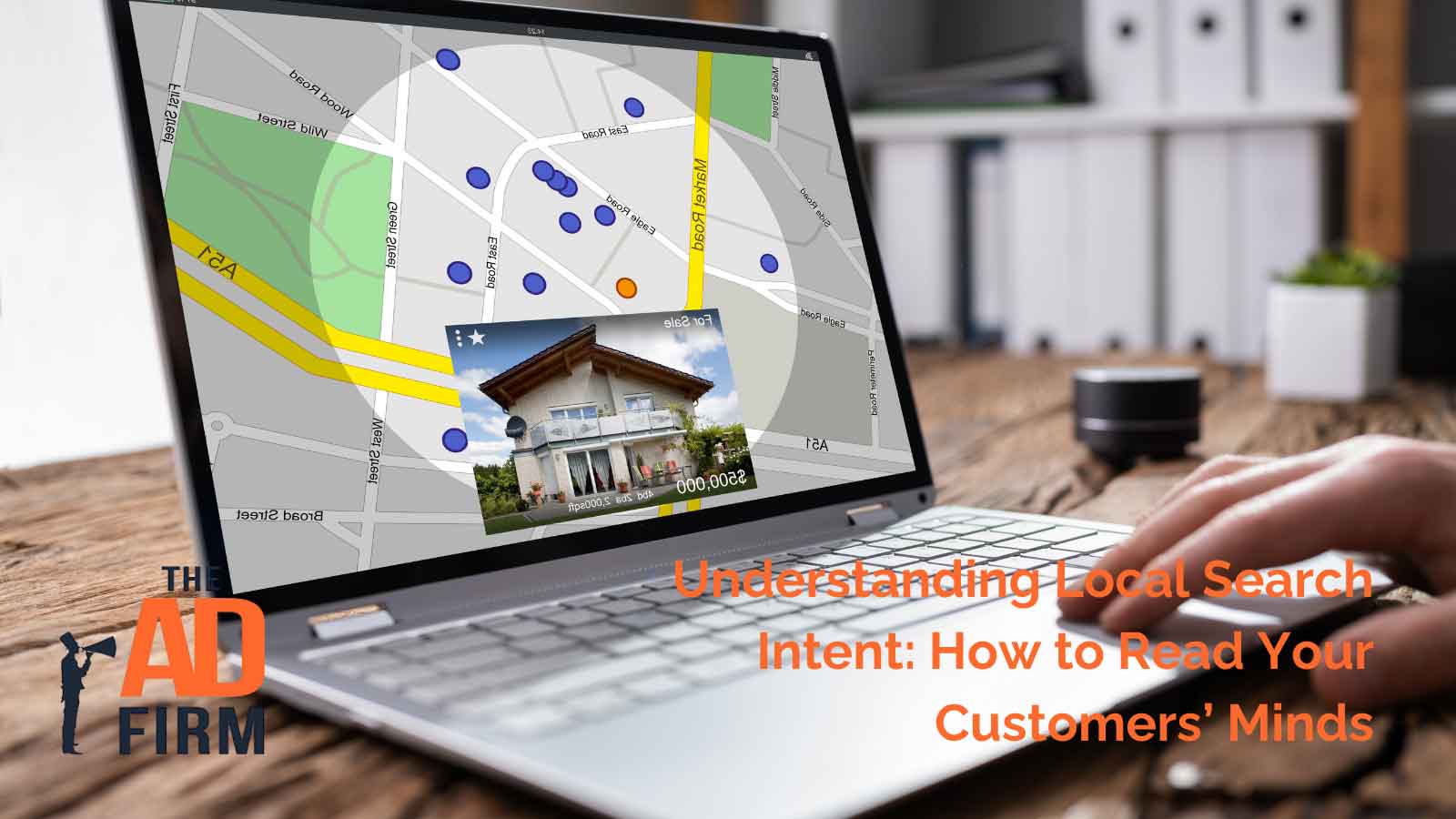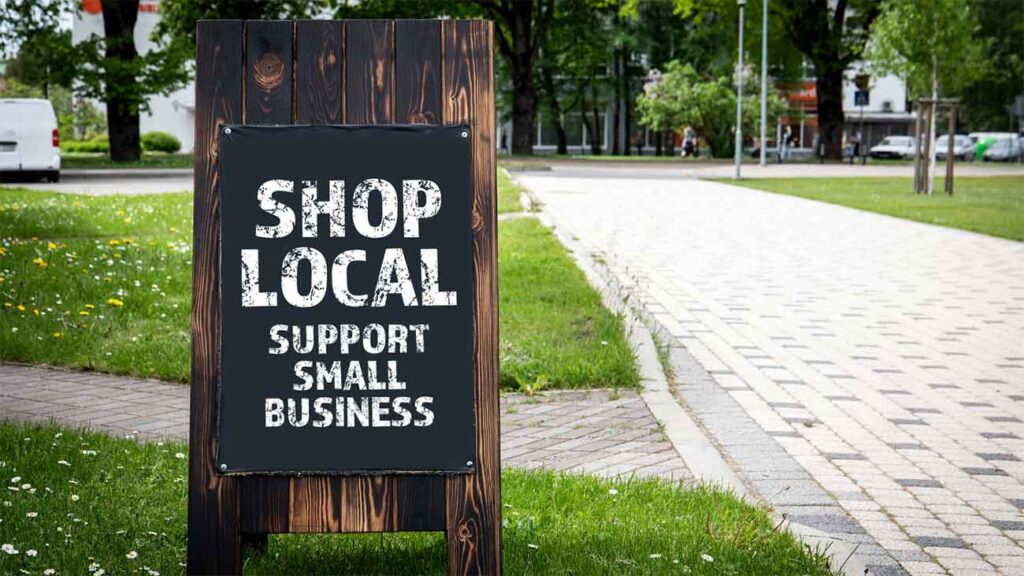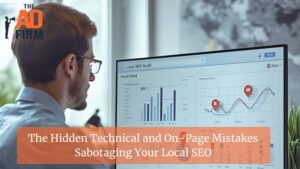Getting traffic to your website is one thing, but turning that traffic into actual customers is another. Even more frustrating is not showing up at all when someone nearby searches for the services you offer.
That gap usually results from misunderstanding what people are searching for and why they’re searching.
Relying on basic keyword targeting is no longer enough. Local search behavior has evolved, and content that doesn’t align with true customer intent often gets ignored. That’s why understanding local search intent is critical for ranking higher and attracting the right kind of attention from people ready to take action.
In this blog, we’ll break down what local search intent means, how it influences every user’s decision, and how to craft content that speaks directly to it.
If you want to improve your visibility, attract more qualified leads, and fully take advantage of professional SEO services, you must first learn to read your audience better.
What Local Search Intent Is
Local search intent is the purpose behind a user’s search that includes a location or implies a desire for something nearby. It’s not just about what they type into Google, but what they’re hoping to do once the results show up.
These users often want quick, relevant answers tied to their immediate needs or location. Think of service providers, nearby shops, or businesses that can help right now.
There are three main types of local search intent:
- Informational: The user is looking for general knowledge about a local topic, service, or business. Example: “best pizza places in Chicago.”
- Navigational: The user is trying to find a specific business or location. Example: “Starbucks near me” or “Home Depot downtown LA.”
- Transactional: The user is ready to take action—book, buy, call, or visit. Example: “haircut open now” or “emergency plumber San Diego.”
Recognizing the type of intent behind a search lets you tailor your content and customer experience more precisely. It’s about understanding the problem the user wants solved and showing up with the most helpful, relevant solution.
When your website and local listings clearly reflect this intent, you’re more likely to attract the right traffic and convert it.
Why Understanding Local Search Intent Is Critical for Business
When you know what your customers are looking for, you can create better content, appear in the right searches, and convert traffic into action. Understanding local search intent is the backbone of effective SEO and content strategy. Without it, you risk publishing content that sounds right but doesn’t resonate.
Maximize Your Online Impact with The Ad Firm
- Local SEO: Capture the local market with strategic SEO techniques that drive foot traffic and online sales.
- Digital PR: Boost your brand’s image with strategic digital PR that connects and resonates with your audience.
- PPC: Implement targeted PPC campaigns that effectively convert interest into action.
To provide a deeper depth of understanding, here’s why getting local intent right matters:
- Helps match your offers with high-converting customers in your area
- Increases your visibility in location-specific results where competition is lower
- Saves time and budget by targeting only qualified traffic
- Reduces the risk of content decay in 2025 by keeping messaging aligned with real user needs
Businesses that succeed online often have one thing in common: they align content with what people are searching for when they’re ready to act. Intent drives visibility. Intent also drives conversions.
How to Read Your Customers’ Minds Through Local Search Intent Analysis
Knowing what your customer wants is powerful. When you understand how people search and why, you can shape your SEO strategy around actual behavior, not just guesswork.
Let’s walk through how to break down and analyze local search intent so your content connects with the right audience.
Decoding the Four Core Types of Local Search Intent Patterns
Local search behavior follows four patterns: informational, navigational, transactional, and comparison-based. Identifying which pattern applies to your target queries helps you create more relevant content and map user actions more accurately.
For example, if a user types “best HVAC company in Austin with 24/7 support,” they’re not just looking for information but likely looking to hire soon. That’s transactional intent with urgency. Your landing page should include service details, hours, and a clear CTA for fast response.
Review and categorize the top-performing queries in your search console. Create pages, blogs, or local listings that match each intent type so your content matches the user’s mindset from the start.
Analyzing Search Query Language and Hidden Customer Motivations
People’s language tells you more than just what they want. It reveals why they want it. Words like “affordable,” “trusted,” or “top-rated” show emotion and priority, not just a product or service.
Let’s say someone searches “trusted personal injury attorney near Santa Ana.” The inclusion of “trusted” shows they care about credibility. This isn’t the time for a generic landing page. A better move is a testimonial-rich service page that opens with credentials and social proof.
Advance Your Digital Reach with The Ad Firm
- Local SEO: Dominate your local market and attract more customers with targeted local SEO strategies.
- PPC: Use precise PPC management to draw high-quality traffic and boost your leads effectively.
- Content Marketing: Create and distribute valuable, relevant content that captivates your audience and builds authority.
Create a running list of emotional or qualifying words from your keyword data. Use that list to build messaging that speaks to hidden motivations, not just the obvious search.
Understanding Time and Location Context Clues in Customer Searches
Time and place often influence search behavior more than people realize. A query like “emergency dentist open late in Costa Mesa” contains urgency and a time-sensitive need. Your regular content won’t cut it if your business hours aren’t updated or visible.
Set up pages that reflect your hours of availability, and if applicable, offer after-hours solutions. Ensure your Google Business Profile is accurate and includes business hours, service areas, and peak availability.
Use tools like Google Trends or your analytics to map when and where people search. This helps you schedule campaigns and content updates when intent is highest.
Reading Between the Lines of Long Tail Local Keywords
Long-tail keywords carry specific intent and often reveal a customer’s exact problem. Queries like “affordable AC repair for condos in downtown San Diego” speak to service type, pricing sensitivity, audience, and location—all in one phrase.
Rather than optimizing for just “AC repair San Diego,” break your content into subpages or sections that reflect variations like condo units, commercial spaces, or emergency fixes. This level of specificity attracts more qualified leads.
Businesses offering local SEO services should build campaigns around these long-tail phrases. They convert better and provide stronger insight into customer needs than broader terms.
Interpreting Mobile vs Desktop Search Behavior Differences
People search differently depending on the device they’re using. Mobile users tend to look for fast, location-based results and make quick decisions. Desktop users may browse longer, compare options, or research more deeply.
If someone on mobile searches “coffee near me open now,” your mobile site better load fast, show current hours, and offer tap-to-call options. Desktop visitors might want to read reviews, view a full menu, or plan for later.
Use device segmentation in your analytics to compare behavior. Adjust your site experience accordingly by simplifying mobile CTAs and making desktop content more detailed.
Strengthen Your Online Authority with The Ad Firm
- SEO: Build a formidable online presence with SEO strategies designed for maximum impact.
- Web Design: Create a website that not only looks great but also performs well across all devices.
- Digital PR: Manage your online reputation and enhance visibility with strategic digital public relations.
Recognizing Seasonal and Urgency Signals in Local Search Queries
Local searches often spike around specific seasons or events. Someone might search “holiday light installation Irvine” in early November or “tax help near me” in early April. These patterns reflect urgency and timing.
Plan content calendars based on seasonal trends. For example, publish a “last-minute Valentine’s Day gift shops in Orange County” blog to catch early searchers in late January.
Track historic search data for your niche to build a seasonal content strategy. Matching content with known spikes improves relevance and helps you rank when urgency is at its peak.
What to Do After Understanding Your Local Search Intent Data
Once you’ve mapped out the search intent behind your audience’s queries, the next step is action. Data means little without application. You must translate insights into changes directly affecting visibility, engagement, and conversions.
That means refining your content, structure, and targeting based on the patterns you’ve identified.
Here’s how to put your insights to work:
- Update meta titles and descriptions to reflect intent-based keywords better
- Create or revise landing pages to match search intent categories and behaviors
- Tailor CTAs for different types of local intent (e.g., urgent services vs. research-mode users)
- Restructure internal links to guide users through relevant content based on their likely path
- Use intent signals to adjust your Google Business Profile, ads, and local schema markup
Treat your intent data like a real-time feedback loop. Review regularly. Test small changes. Track what shifts in traffic, bounce rate, and calls or clicks. Let data shape how you evolve, not just how you analyze.
Wrapping It Up
Understanding local search intent changes the way you approach digital strategy. It takes you out of reactive mode and into precise, targeted decision-making. When you apply these insights across your content and structure, your local visibility improves and conversions increase.
If you’re serious about capturing high-intent traffic and don’t want to leave results to chance, work with our trusted digital marketing agency. We understand the nuances of local search and can guarantee favorable results.
We help businesses like yours take the guesswork out of SEO with strategies grounded in real data and executed for real impact. Call The Ad Firm today for a free consultation!
Enhance Your Brand Visibility with The Ad Firm
- SEO: Enhance your online presence with our advanced SEO tactics designed for long-term success.
- Content Marketing: Tell your brand’s story through compelling content that engages and retains customers.
- Web Design: Design visually appealing and user-friendly websites that stand out in your industry.






